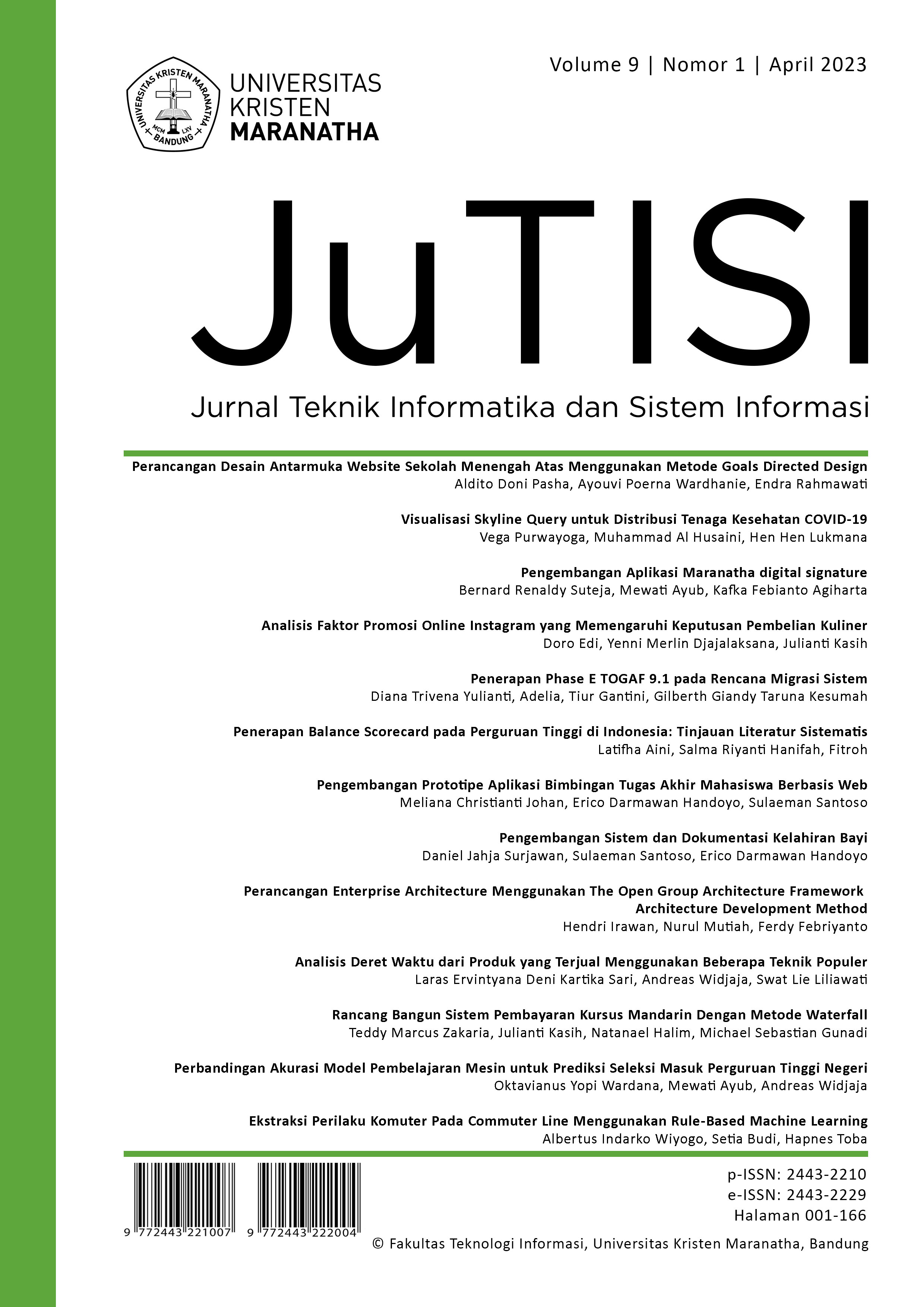Implementation of Phase E TOGAF 9.1 on the System Migration Plan
Main Article Content
Abstract
Enterprise architecture is a proactive and holistic way to describe a company as a whole about responding to opportunities or problems by identifying and analyse changes that occur in the company in accordance with the company's vision and the results to be achieved. Enterprise architecture has several frameworks that can be implemented, one of which is TOGAF 9.1. An university in Bandung has many systems implemented for its operational continuity, one of which is the Academic System. The development of enterprise architecture with an academic system scope that has been carried out previously is by analysing the preliminary phase, phase A Architecture Vision, phase B Business Architecture, phase C Information System Architecture, and phase D Technology Architecture. To be able to achieve the target architecture, further development is carried out in phase E Opportunities and Solutions. To achieve this goal, data collection related to the outputs of the previous phases was carried out, then carried out the steps in phase E. Then it was compiled into an enterprise architecture document using the TOGAF 9.1 framework by conducting a gap analysis review, maturity level systems, solutions tailored to the target architecture and the results of gap analysis and maturity level and system migration planning.
Downloads
Download data is not yet available.
Article Details
How to Cite
[1]
D. T. Yulianti, A. Adelia, T. Gantini, and G. G. T. Kesumah, “Implementation of Phase E TOGAF 9.1 on the System Migration Plan”, JuTISI, vol. 9, no. 1, pp. 47 –, Apr. 2023.
Section
Articles

This work is licensed under a Creative Commons Attribution-NonCommercial 4.0 International License.
This is an open-access article distributed under the terms of the Creative Commons Attribution-NonCommercial 4.0 International License (https://creativecommons.org/licenses/by-nc/4.0/) which permits unrestricted non-commercial used, distribution and reproduction in any medium.
This work is licensed under a Creative Commons Attribution-NonCommercial 4.0 International License.

